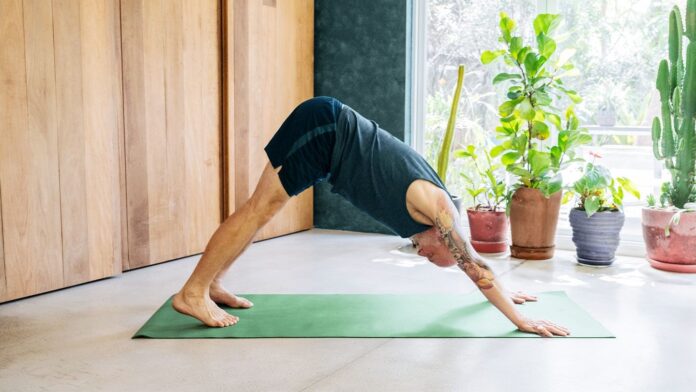Staying flexible and mobile is crucial as we age, but the right stretches change with each decade. This guide breaks down the most effective stretches for your 50s, 60s, and 70s+, emphasizing how to adapt them for maximum comfort and effectiveness.
Why Stretching Matters with Age
As we get older, muscle flexibility naturally declines, making everyday movements harder. Consistent stretching helps maintain range of motion, prevent pain, and preserve independence. However, forcing movements can lead to injury, so adapting to your body’s changing needs is essential.
Stretching in Your 50s: Maintaining Muscle Stretch
In your 50s, flexibility begins to noticeably decrease, making simple tasks like bending or reaching more challenging. The goal is to preserve existing range of motion.
- World’s Greatest Stretch: Starting on all fours, step one foot outside the corresponding hand, twist, and reach. Repeat on both sides. This opens the hips, back, and shoulders.
- Downward-Facing Dog: From all fours, lift hips up and back, forming an inverted V-shape. A slight bend in the knees is okay. This stretches hamstrings, calves, and back.
- Lying Figure 4 Windshield Wiper: Lie on your back, cross one ankle over the opposite knee, and gently drop the bent leg to the side. This opens hips and lower back.
Stretching in Your 60s: Preventing Pain & Maintaining Comfort
Muscle loss (sarcopenia) accelerates in your 60s, and joint mobility declines. Stretching helps maintain comfort and prevent pain in daily activities like walking or reaching overhead.
- Child’s Pose: Kneel, sit back on heels, and stretch arms forward. This gently lengthens lower back, hips, and waist.
- Lying Windshield Wipers: Lie on back, bend knees, and gently drop legs to one side, keeping upper body still. This opens hips and lower back.
- Half-Kneeling Bow and Arrow: Kneel with one knee bent, draw back the elbow of the opposite arm as if pulling a bowstring, twisting the torso. This stretches back, shoulders, and obliques.
Stretching in Your 70s and Beyond: Avoiding Injury & Staying Safe
Pain avoidance is paramount in your 70s+. The body’s healing ability slows, so injury prevention is the priority. Use cushioned surfaces and support as needed.
- Side-Lying Thoracic Rotation: Lie on one side, stack legs, and rotate upper body while opening chest. This improves upper back mobility.
- Seated Lat Stretch: Sit in a chair, lean forward with arms extended, and drop head between hands. This stretches back and lats.
- Seated Figure 4 Stretch: Sit, cross one ankle over opposite thigh, and lean forward. This opens hips and lower back.
Key Takeaways
Regular stretching is essential for healthy aging, but the right approach changes with each decade. Adjust movements to avoid pain, prioritize safety, and focus on maintaining comfort and mobility. By adapting your routine, you can stay active and independent for years to come




















